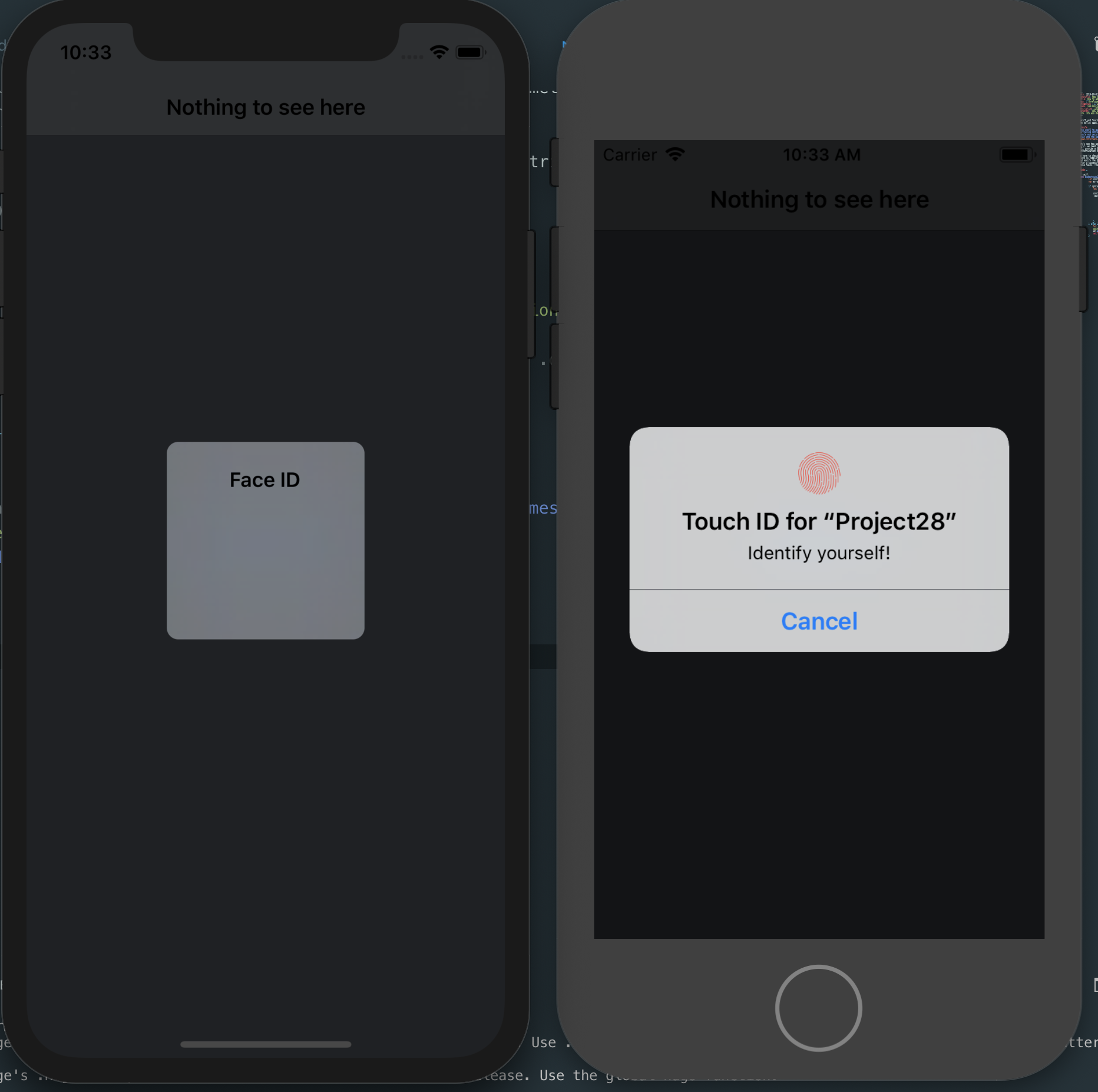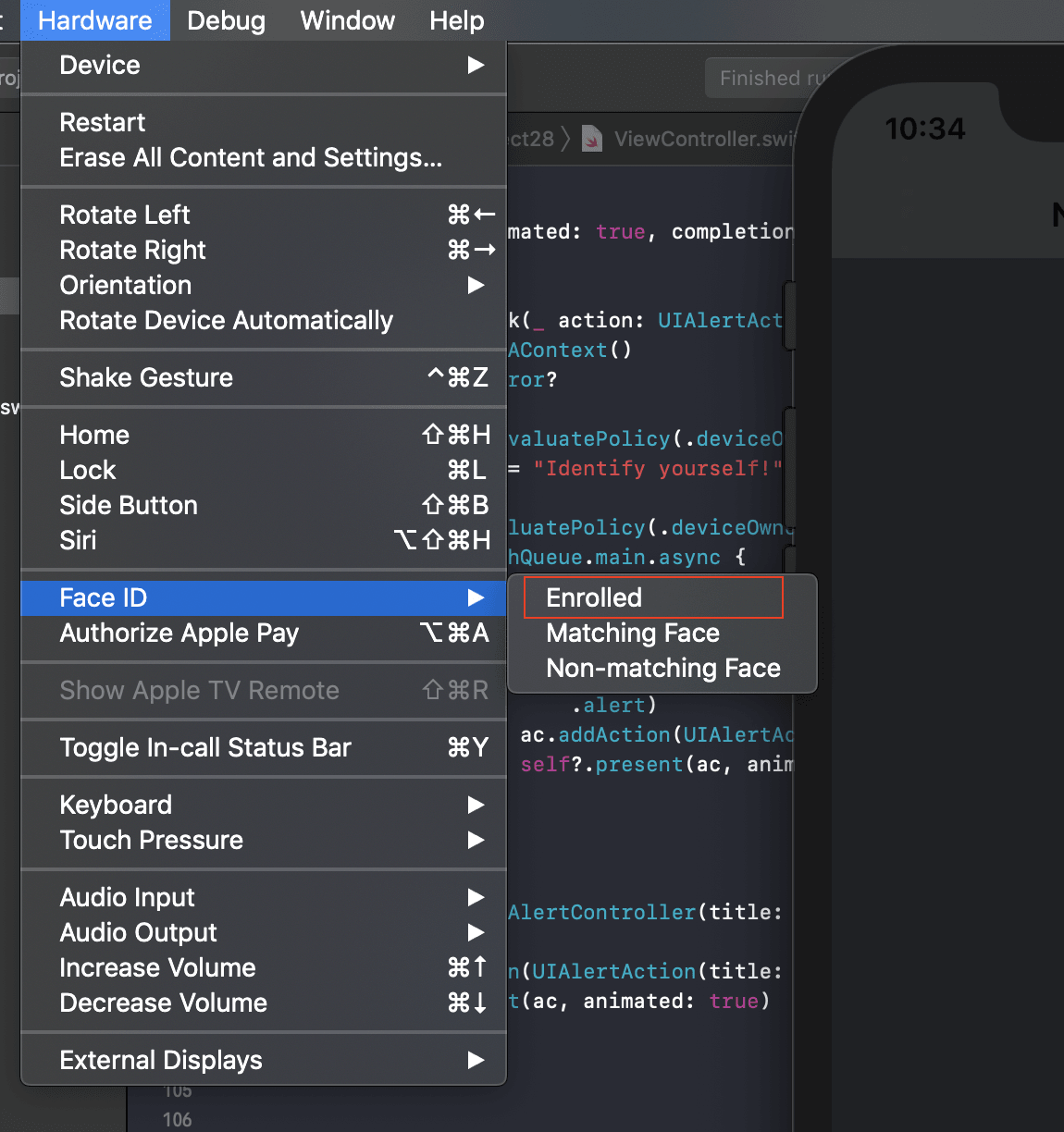FaceID and TouchID can be used in apps to authenticate users for in-app purchase or accessing personal info or more. Check the wallet apps, almost all of them have TouchID or FaceID enabled.
Let’s see how we can add TouchID and FaceID into an app.
First, we need to import the LocalAuthentication to the app. Then we have create an LAContext object , which will provide a UI for evaluating the authentication policies and access controls, managing credentials, and invalidating authentication contexts.
We have to check whether a particular policy can be evaluated, here its device authentication with bio-metrics. When that block is complete we can run the evaluatePolicy to get user authentication/consent. Once user authenticate go ahead and modify the UI or do your action.
After a successful authentication if you gonna update the UI part, remember always use DispatchQueue.main.async to run those tasks. The UI Changes must run in main thread.
Code:
func biometrickCheck(_ action: UIAlertAction) {
let context = LAContext()
var error: NSError?
if context.canEvaluatePolicy(.deviceOwnerAuthenticationWithBiometrics, error: &error) {
let reason = "Identify yourself!"
context.evaluatePolicy(.deviceOwnerAuthenticationWithBiometrics, localizedReason: reason) { [weak self] (success, authError) in
DispatchQueue.main.async {
if success {
self?.unlockSecretData()
} else {
let ac = UIAlertController(title: "Authentication failed", message: "You could not be verified; please try again.", preferredStyle: .alert)
ac.addAction(UIAlertAction(title: "OK", style: .default))
self?.present(ac, animated: true)
}
}
}
} else {
let ac = UIAlertController(title: "Biometry unavailable", message: "Your device is not configured for biometric authentication.", preferredStyle: .alert)
ac.addAction(UIAlertAction(title: "OK", style: .default))
self.present(ac, animated: true)
}
}

Try testing in a real device. If you don’t have a real device, use the Simulator’s Hardware->Touch ID options.

I hope this article helped you